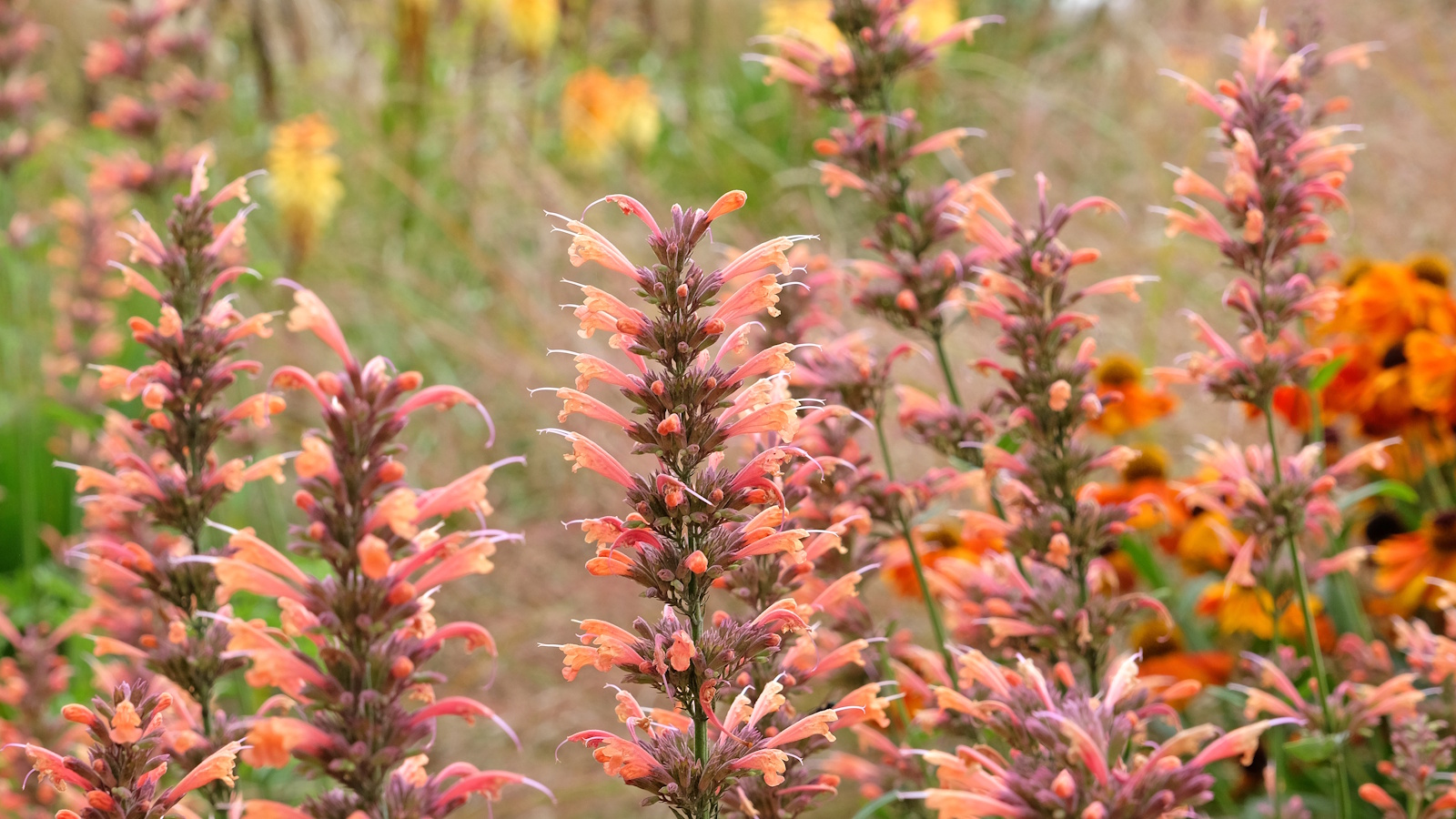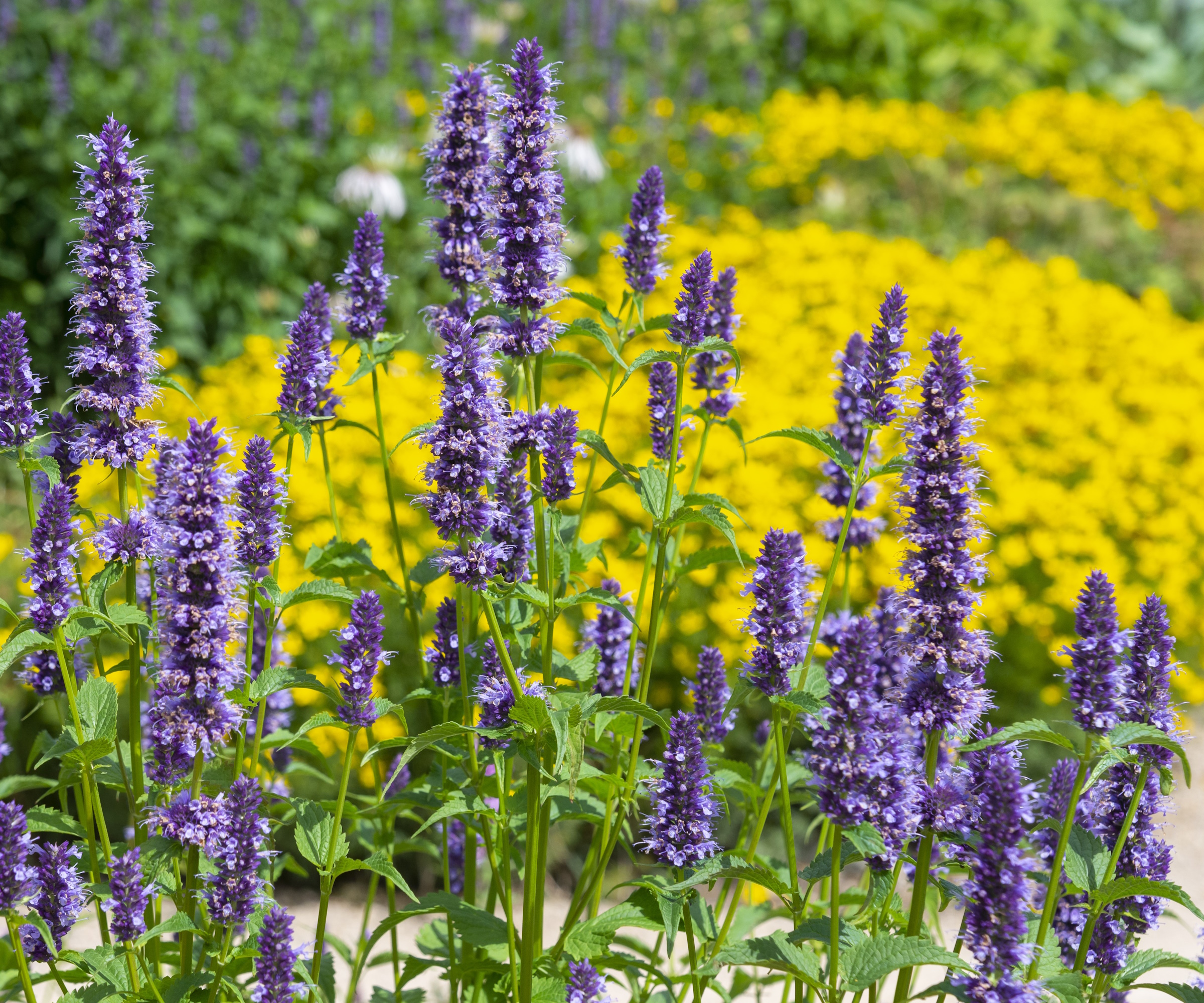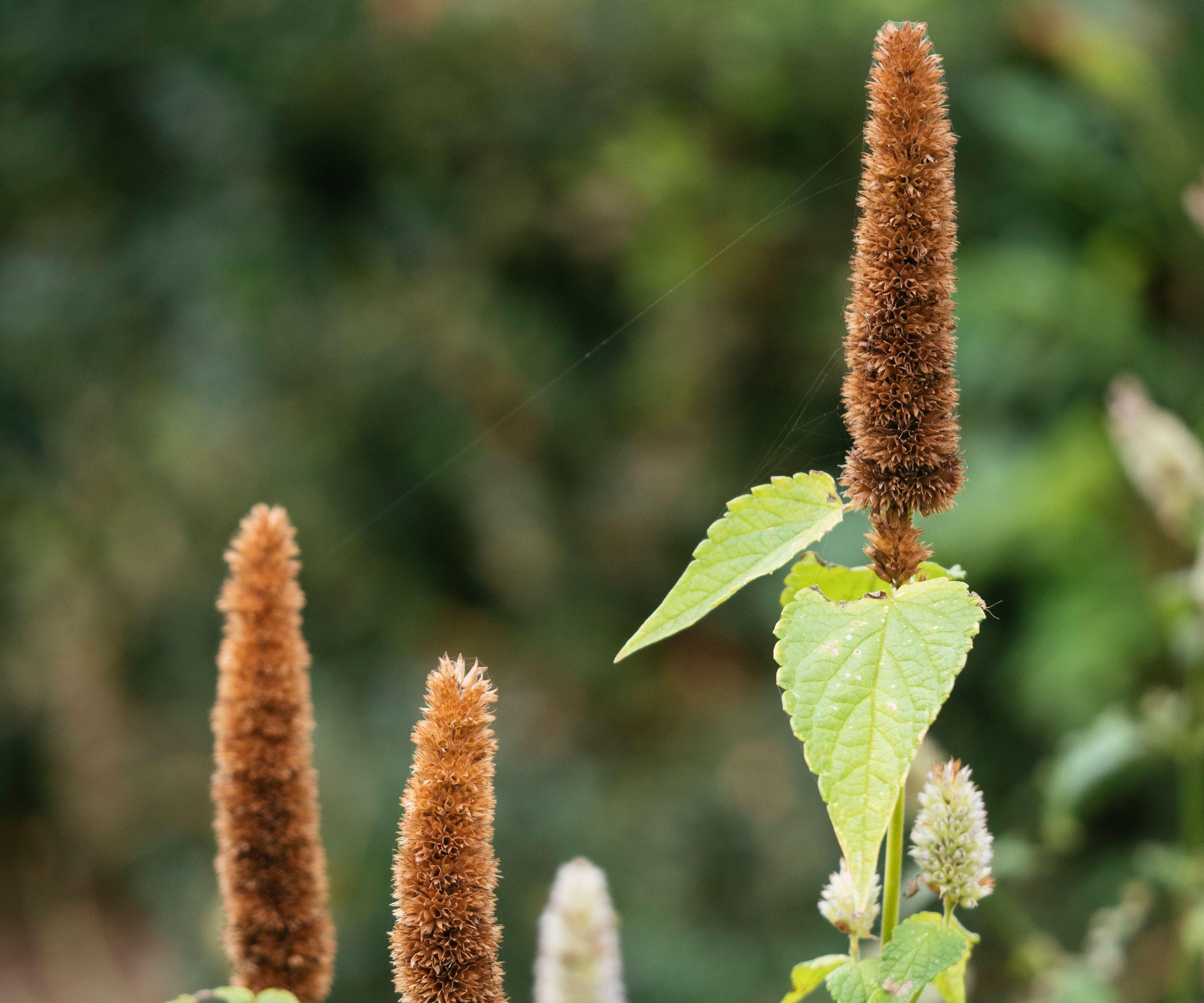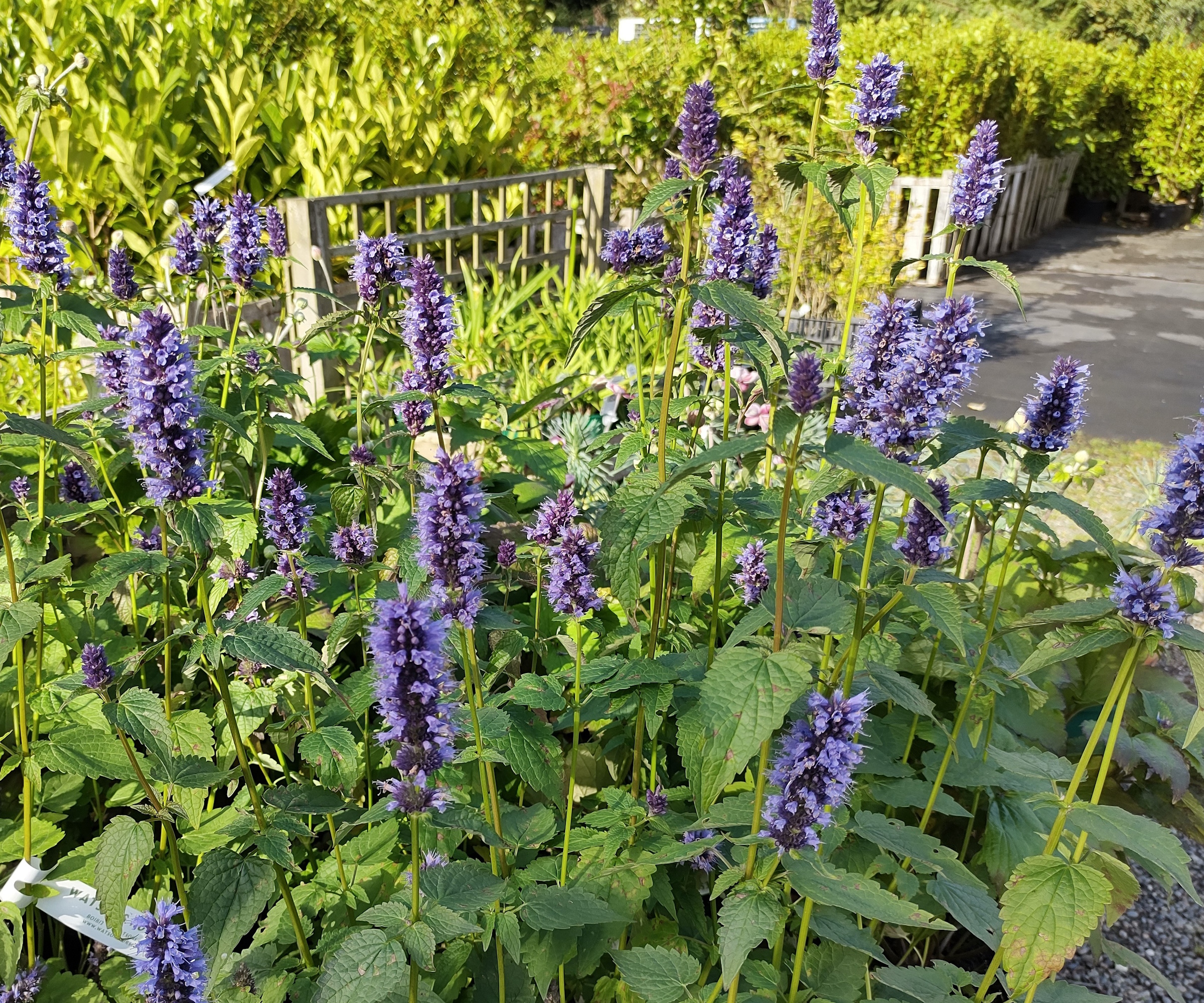
Popular with gardeners and pollinators alike, the native hummingbird mint makes for a colorful and aromatic addition to any yard. With long, tubular blooms that can be found in vibrant shades of red, purple and peach, hummingbird mint plants are both long-lasting and impactful, keeping the floral show going into the early fall months.
Sowing hummingbird mint seed in the fall is, in my experience, a good option that tends to have a high success rate. Direct sowing into your borders will allow the seeds to undergo a process called stratification, best understood as a period of cold weather exposure required for germination. Fall sowing in the yard will expose the seed to cold winter temperatures, therefore encouraging the plant to germinate and produce robust growth during the following spring.
As a former professional gardener, I have grown all manner of annuals, perennials, vegetables and salad crops from seed. While not always successful, in gardening, you often have to adopt a trial-and-error approach, learning from what worked and what didn't. Here, I share all my seed-sowing lessons concerning how to grow hummingbird mint, helping you to get your borders in tip-top shape and full of color next year.

How to grow hummingbird mint from seed in the fall
There are 22 different species of hummingbird mint belonging to the Agastache genus. The majority of these can be grown from US hardiness zone 5 and above, and are native to the warmer regions of North and Central America, while only one is native to Asia.
One of my favorite species that I have grown is the licorice mint, Agastache rupestris, seen in the first image here with salmon-peach blooms. Native to mountainous regions across Arizona, New Mexico and south of the border into Mexico, this species is an ideal plant for pollinators, known to attract hummingbirds, bees and butterflies. Whatever hummingbird mint seeds you opt to grow, be sure to sow in a sunny position, as these long-flowering perennials enjoy light and warmth in the spring and summer.
Direct sowing seeds in the fall

Growing hummingbird mint from seed is a rewarding endeavor that is relatively straightforward. So long as your seed is viable and you have a sunny border, learning how to germinate seeds shouldn't be too complicated.
As a gardener, direct sowing in the yard is preferable when you don't have lots of greenhouse or cold frame space. Directly sowing seeds means that you do not need propagation stations, heated mats or bench space. Simply get your seeds in the ground and forget about them until the spring.
To begin, choose a sunny border with well-draining soil. Before I ever direct sow, I always tidy the bed, removing any faded annuals or crops, before weeding and then gently tilling or forking the soil. You then want to spend time loosening the soil with a rake, breaking up any large clumps of rock or clay.
Once your soil is tilled and level, you can scatter your seeds. If you have any hummingbird mint plants growing in the yard, be sure to stop deadheading in late summer to then save and gather the brown seed heads in fall, as seen in the image above.
It is up to you how neat or organized you want to be when seed sowing. In many of the private gardens where I have worked, keeping the formal gardens looking neat and tidy was of paramount importance, so we would sow seeds using a string line in flower garden beds. However, if you are only sowing a small patch for one, two, or three new plants, you can simply sow in the area you need. In my experience, it is best to be generous but not overzealous when seed sowing. While you do not want to waste seeds, you want to have more seedlings as an insurance policy, in the knowledge that some might not germinate. Hummingbird mint seeds are available from Walmart.
Using your fist, gently press the seeds down to ensure that they have contact with the soil. Then, lightly cover with a thin layer of garden soil combined with a little sand. Avoid burying these seeds deeply, as they need light to germinate.
Finally, water lightly, using a watering can with a rose to avoid displacing seeds. If the ground is already damp, only a small amount of water is required. Keep the soil moist through fall, adjusting the amount depending on rainfall. Galvanized watering cans are available from Amazon.
Do not water your seeds using a hose, this garden watering mistake can spell disaster for your seeds, burying them too deeply in saturated soil. If you live in a warm region, such as US hardiness zone 9 or 10, you might need to occasionally water your seeds during dry spells in the fall. This is not usually necessary in cooler, northerly regions.
Finally, be sure to label the area where you have sown hummingbird mint seeds. By the time spring comes around, you may have forgotten what was sown and where. Labelling in the fall will prevent any seed-sowing mistakes. I have learned the hard way about the important of labelling seeds.
Hori Hori knives are popular Japanese gardening tools that can be used to weed and plant. They will prove effective when digging a small trench for your hummingbird mint seeds.
Hardy and long-flowering, who wouldn't want to grow hummingbird mint? These perennials can flower in the first year, filling your plot with blooms and pollinators.
With a strong and sturdy design, this metal rake will make light work of all your gardening chores, ideal for clearing and levelling the soil ahead of seed sowing.
Caring for hummingbird mint seedlings in spring

Patience is important when learning how to grow hummingbird mint from seed. When direct sowing in the fall, the seeds will lie dormant until temperatures rise in spring. As mentioned above, the Agastache genus needs cold stratification to germinate, so exposing your seeds to the chilly winter weather will result in (hopefully) lots of green shoots appearing in the spring.
As part of your spring gardening checklist, monitor your hummingbird mint seedlings and water if there is little rainfall. If you have too many seedlings, you can either prick out and dispose of them, or learn how and when to transplant seedlings to elsewhere in the yard.
For transplanting, once the seedlings are three to four inches tall, gently loosen the soil, being careful not to damage the roots. Be sure to give your seedling 12 to 15 inches of space to grow over the coming months. With some sunshine and a small amount of luck, they should flower in the first year.
FAQs
When is the best time to sow hummingbird mint seeds in a greenhouse or under cover?
If you want to sow hummingbird mint indoors, it is best to wait until late winter to early spring to do so. Sow onto moist but well-drained seed compost, lightly covering your seeds. Water your seed pots or trays from the base as opposed to from a watering can. Once germination begins, give your plants some air (either by opening the door or with a fan) to prevent damping off, which can kill your seedlings. Once the seedlings are large enough to handle, transplant them to small pots, taking them outside for a few hours each day before planting outside in late spring.
Avoid mulching areas where you have sown seeds. Mulch can help to retain moisture and suppress weeds in your borders, but a thick mulch layer can prevent the germination of hummingbird mint seeds that need light. Once your seedlings have grown into small plants, you can then mulch them in late spring, which should help your young plants over the summer months.







